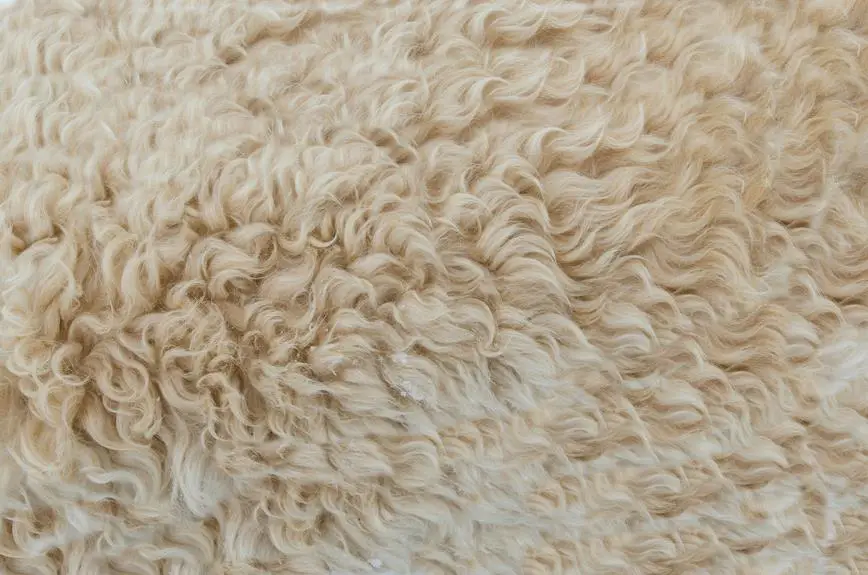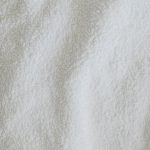When you look at Oxford fabric, it's easy to appreciate its versatility and comfort, but have you ever considered how it's made? The process starts with careful selection of fibers like cotton or polyester, which sets the stage for what follows. From spinning these fibers into strong yarns to weaving them in a distinctive basketweave pattern, every step plays a crucial role in the fabric's quality. But that's just the beginning; the finishing treatments add even more desirable properties. Curious about how these elements come together to create such a functional material?
Table of Contents
Overview of Oxford Fabric
Oxford fabric is a versatile, durable textile known for its unique basketweave structure, making it a popular choice for shirts, bags, and various other applications. This fabric typically features a combination of two different fibers, which enhances its strength and resilience. You'll often find it in both cotton and synthetic blends, giving you options depending on your needs.
The weaving technique used in Oxford fabric contributes to its characteristic softness and breathability. When you wear an Oxford shirt, you'll likely appreciate how comfortable it feels against your skin. The structure not only adds a stylish texture but also provides a bit of sheen, making it suitable for both casual and formal occasions.
Oxford fabric is easy to care for, as it can withstand regular washing without losing its shape or color. This quality makes it an ideal choice for everyday clothing and accessories. Plus, its durability ensures that items made from Oxford fabric last for years, which is a significant advantage for those seeking long-lasting products.
Selecting the Right Fibers
When choosing fibers for Oxford fabric, consider how different materials can impact durability, comfort, and overall appearance. The right fiber selection can make a significant difference in the final product, so keep these factors in mind:
- Cotton: This natural fiber is soft and breathable, making it perfect for casual wear. It offers good comfort but may require more care to maintain its appearance over time.
- Polyester: Known for its durability, polyester resists wrinkles and fading. It's a great option if you're looking for low-maintenance fabric that holds its shape and color well.
- Blends: Combining fibers, like cotton and polyester, can give you the best of both worlds. Blends often enhance comfort while improving durability and performance, making them versatile for various applications.
Ultimately, selecting the right fibers depends on your specific needs and intended use.
Think about what's most important to you—whether that's comfort, durability, or ease of care.
The Spinning Process
Now that you've selected the right fibers, it's time to explore the spinning process.
You'll learn about various fiber selection techniques, different spinning methods, and the quality control measures that ensure the fabric meets high standards.
Understanding these points will give you a clearer picture of how Oxford fabric is crafted.
Fiber Selection Techniques
Choosing the right fibers is crucial in the spinning process, as it directly influences the quality and durability of the final Oxford fabric. You'll want to consider several factors to ensure optimal fiber selection.
Here are three key techniques to guide your decision:
- Fiber Composition: Evaluate the blend of natural and synthetic fibers. Cotton provides breathability, while polyester adds strength and wrinkle resistance. Finding a suitable balance is vital.
- Fiber Length: Longer fibers typically produce smoother and stronger yarns. When selecting fibers, aim for those with a consistent length to enhance the uniformity of the final fabric.
- Fiber Quality: Look for high-quality fibers that have minimal defects. Inspect the fibers for cleanliness and strength, as these factors will significantly impact the overall performance of the fabric.
Spinning Methods Overview
Understanding the spinning process is essential, as it transforms selected fibers into yarn, laying the foundation for high-quality Oxford fabric. You'll find that various spinning methods are employed, each offering unique characteristics to the final product.
Here's a quick overview of the common spinning methods:
| Spinning Method | Description |
|---|---|
| Ring Spinning | Produces a strong, fine yarn, ideal for soft fabrics. |
| Open-End Spinning | Utilizes a rotor for faster production, resulting in bulkier yarns. |
| Air-Jet Spinning | Uses air to twist fibers, creating lightweight and smooth yarns. |
| Vortex Spinning | Generates a unique texture, producing yarns with high durability. |
As you explore these methods, you'll notice that each one affects the fabric's texture, strength, and overall quality. The choice of spinning method can significantly influence how the fabric behaves, drapes, and wears over time. By understanding these techniques, you're better equipped to appreciate the craftsmanship behind Oxford fabric and make informed decisions in its production.
Quality Control Measures
Quality control measures during the spinning process ensure that the yarn meets the desired standards for strength, consistency, and texture. You'll find that these measures are crucial in creating high-quality Oxford fabric. The spinning process involves several checks to maintain the integrity of the yarn.
Here are three key quality control measures you should pay attention to:
- Tension Monitoring: Throughout the spinning process, maintaining consistent tension is vital. Any fluctuations can lead to weak spots or irregularities in the yarn.
- Yarn Thickness Assessment: Regular checks on the yarn's thickness help guarantee uniformity. This ensures that the resulting fabric will have a consistent appearance and feel.
- Strength Testing: Before the yarn is finalized, strength tests are conducted. This ensures that the yarn can withstand everyday wear and tear, which is essential for durability.
Weaving Techniques
When you explore weaving techniques, you'll first encounter the basics of warp and weft.
These two elements create the foundation for various patterns and texture variations in Oxford fabric.
Understanding how they interact is key to appreciating the fabric's unique characteristics.
Warp and Weft Basics
Weaving together threads in a specific pattern, warp and weft create the foundation of Oxford fabric, defining its texture and strength. The warp threads run vertically, while the weft threads weave horizontally, creating a stable and durable fabric. Understanding how these two components interact is essential for appreciating the craftsmanship behind Oxford fabric.
Here are three key aspects of warp and weft to consider:
- Thread Count: The number of warp and weft threads per inch directly impacts the fabric's durability and feel. A higher thread count usually results in a tighter, more resilient weave.
- Yarn Type: Different yarns can change the fabric's overall characteristics. Cotton is commonly used for Oxford fabric due to its breathability and comfort, but blends with polyester can enhance durability.
- Weaving Technique: The way threads are interlaced matters. A traditional Oxford weave often features a basketweave pattern, adding to its unique texture and making it suitable for various applications, from shirts to upholstery.
Patterns and Texture Variations
Oxford fabric often showcases a variety of patterns and texture variations that enhance its visual appeal and functionality. You'll notice that the most common patterns include plain, striped, and checkered designs. These patterns are created through different weaving techniques, allowing you to choose the one that best fits your style or project needs.
When you look closely, you'll see that the texture of Oxford fabric can also vary. The classic Oxford weave features a basket weave structure, which gives it a slightly raised texture. This not only adds depth but also contributes to its durability.
Some manufacturers add a twist to the traditional weave, creating a softer or more textured finish that can elevate the fabric's overall look.
Moreover, the use of color can significantly influence the appearance of patterns. You might find vibrant hues or subtle shades that complement your design intentions.
Whether you're making shirts, dresses, or home textiles, these patterns and textures make Oxford fabric a versatile choice. By selecting the right combination, you can achieve the perfect balance of style and practicality for your projects.
Finishing Treatments
How do finishing treatments enhance the durability and appearance of Oxford fabric? These treatments play a crucial role in ensuring the fabric not only looks great but also stands the test of time. By applying various techniques, manufacturers can improve the fabric's performance and aesthetic appeal.
Here are three key finishing treatments commonly used:
- Water Repellent Coating: This treatment adds a layer of protection against moisture, keeping the fabric dry and making it suitable for various weather conditions.
- Wrinkle Resistance: By applying a chemical finish, Oxford fabric can resist wrinkling, which means it maintains a crisp, polished look even after washing and wearing.
- Color Fastness Treatment: This ensures that the vibrant colors of the fabric remain intact, resisting fading from sunlight and repeated washes.
These finishing treatments not only elevate the fabric's functionality but also enhance its visual charm. When you choose Oxford fabric, you can trust that these treatments contribute to its overall quality, ensuring you get a product that's both stylish and long-lasting.
Quality Control Measures
Ensuring top-notch quality in Oxford fabric involves a series of meticulous control measures throughout the production process.
Quality control starts with selecting the right raw materials. Inspecting yarns for consistency and strength is crucial, so you can be confident in the fabric's durability.
Next, during weaving, you'll want to monitor tension and alignment. Regular checks ensure that the fabric maintains its desired texture and pattern.
After weaving, it's essential to conduct a thorough inspection for any defects, like snags or uneven surfaces. This step is vital to prevent flaws from reaching the final product.
Once the fabric has undergone finishing treatments, you should carry out further quality evaluations. Testing for colorfastness and shrinkage gives you a clear picture of how the fabric will perform in real-world applications.
You'll also want to assess the weight and drape, ensuring it meets the specifications required for your intended use.
Applications of Oxford Fabric
The rigorous quality control measures in Oxford fabric production not only enhance durability but also make it versatile for various applications across industries. You'll find Oxford fabric in clothing, home furnishings, and even industrial uses. Its unique blend of strength and style makes it a go-to choice for many.
Here are three popular applications of Oxford fabric:
- Apparel: You often see Oxford fabric in shirts, jackets, and uniforms. Its breathable nature and easy maintenance make it ideal for everyday wear.
- Bags and Accessories: The durability of Oxford fabric is perfect for backpacks, luggage, and other accessories. It withstands wear and tear, providing you with a reliable option for your daily travels.
- Home Textiles: Oxford fabric is commonly used for curtains, cushions, and tablecloths. Its classic look and resilience add a touch of sophistication to your home while ensuring longevity.
With its adaptability and robust characteristics, Oxford fabric continues to be a favored choice across multiple sectors, proving its worth in both practicality and style.
Frequently Asked Questions
What Is the History of Oxford Fabric Development?
You'll find that Oxford fabric has roots in the 19th century, evolving from traditional weaves. Its popularity grew due to durability and versatility, making it a staple for shirts, uniforms, and other apparel throughout history.
How Does Weather Affect the Durability of Oxford Fabric?
Weather significantly impacts Oxford fabric's durability. If you expose it to harsh conditions, like intense sunlight or heavy rain, it can weaken. Regular maintenance and proper storage help extend its lifespan despite environmental challenges.
Can Oxford Fabric Be Recycled?
Yes, you can recycle Oxford fabric, but it depends on the material blend. If it's primarily polyester or nylon, check local recycling programs. Always ensure it's clean and free from contaminants before recycling.
What Are Common Misconceptions About Oxford Fabric?
You might think Oxford fabric's only for casual wear, but it's versatile enough for formal settings too. Many also believe it's heavy, while in reality, lighter options exist that maintain durability without compromising style.
How Does Oxford Fabric Compare to Other Fabrics?
When you compare Oxford fabric to others, you'll notice it's durable and breathable. Unlike some synthetic fabrics, it offers a more classic look and is often more comfortable, making it a versatile choice for various applications.
- Tetron Fabric for Marine Applications: Durability and Use Cases - June 18, 2025
- Tetron Fabric for Outdoor Furniture: Weather Resistance and Care - June 18, 2025
- Tetron Fabric for Wall Coverings: Style and Application Tips - June 18, 2025







